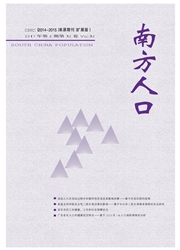

 中文摘要:
中文摘要:
乡一城人口转移作为城市化过程,总体上有利于生育率下降或低生育水平的稳定。但是,由于乡一城转移人口的生育率水平具有既不同于城也有别于乡的差别特征,因此这种转移对城乡生育率的变化必然产生一定的差别效应。通常认为,乡一城转移人口的生育率水平介于城乡之间,即低于乡而高于城。但是,有关研究认为,我国乡一城迁移流动人口的生育率水平已经转变为低于城市。对此,很值得进一步深入探讨。本文首先分析我国城乡生育率的变化和区域差异,然后对乡一城转移人口的总和生育率进行尝试性的推算,最后聚焦讨论流动人口生育行为的流动性问题。
 英文摘要:
英文摘要:
As the main part of urbanization process, the migration from the rural to the urban generally brings about the drop of fertility or the stabilization of low fertility. As the migrants from the rural are different both from the urban residents and the rural residents, the migration of course can cause differential effects in the fertility in the rural and the urban. Usually the fertility of the migrants in the urban from the rural are lower than the fertility of the rural and higher than that of the urban. However, the resent studies show that the fertility of these migrants in urban even lower than the fertility of the urban residents, the significance of this fertility reverse need more and more further studies. This paper analyzes the fertility changes in the rural and the urban and the regional difference and estimates the total fertility rate of the migrants in the urban from the rural and discusses the child-bearing behaviors of the so called floating population.
 同期刊论文项目
同期刊论文项目
 同项目期刊论文
同项目期刊论文
 期刊信息
期刊信息
